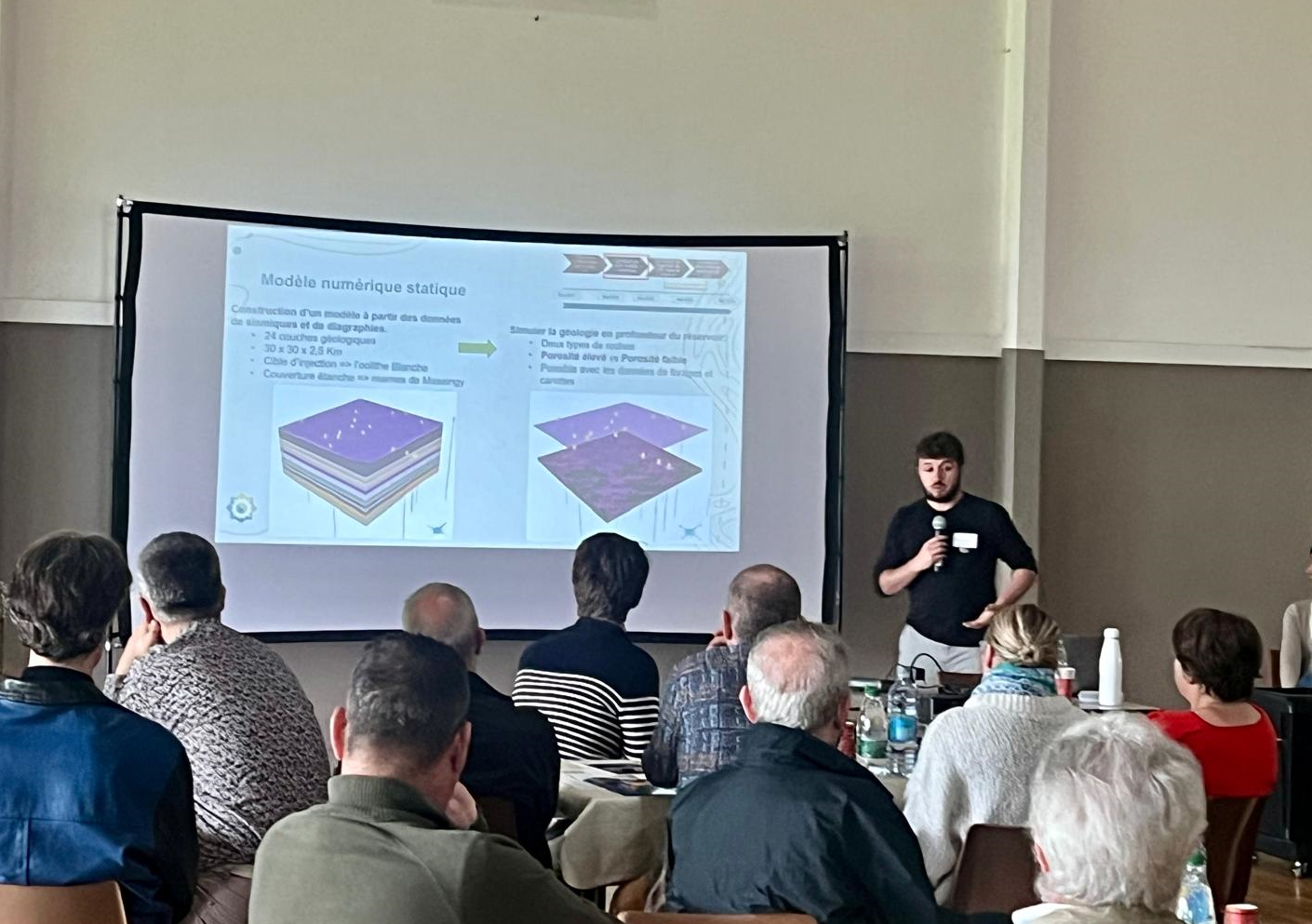PilotSTRATEGY is European research rooted in a local territory. In France the project is focused on the Paris Basin, specifically a 100 km2 area around the Grandpuits industrial site, where there is a fertilizer factory with the capacity to capture its own CO2 emissions.
France’s Open Doors event is one of several venues where local stakeholders can find out about the scientific work, ask questions, and discuss with researchers and other participants. At the 3rd annual edition in May 2024, about 25 people took part: local residents, farmers, elected representatives and administrators from various townships, environmental associations, and industrialists. On hand to present the work and to exchange ideas were 12 researchers from project partners BRGM, IFPEN, and Symlog. In addition G. Le Cozannet, co-author of the 6th report by the Intergovernmental Panel on Climate Change (IPCC), presented the findings of this United Nations body.
Team leader A. Bordenave first gave a reminder of why carbon dioxide (CO2) matters, and how Carbon Capture and Storage (CCS) can play a role in the green transition as a needed supplement to the natural carbon sink, vegetation. He outlined PilotSTRATEGY’s approach to assessing the suitability of deep saline aquifers to store CO2 about 2 km underground in the Dogger reservoir. Field data, including 3D imaging by seismic reflection carried out with the agreement of the landowners, provide a view of local subsurface geometry, showing the depth and thickness of the reservoir and the impermeable clay cap rock, and the absence of significant faults. PilotSTRATEGY France now has a digital model of reservoir properties, identifying the most favourable underground areas according to the distribution of rock porosity. The project data and models prove to be of high quality, and initial assessments can support the French and European medium-term objective of integrating CCS solutions. Next up are computer simulations of CO2 injection to study the behaviour of the injected gas and the receiving rock (thermodynamics, migration, petrophysical properties).
Coordinator I. Gravaud then informed the stakeholders about the next project stages. Continuing simulations will study the optimisation of injection well placement (maximizing storage capacity and distance from existing wells, minimizing pressure impact). The fate of storage over 1000 years will be simulated to determine the extent of the CO2 plume, dissolution and mineralization. In parallel, the team will assess risks and identify operating conditions that can ensure that storage poses no significant risk to health or the environment. European and French regulations are strict on this point. The project will also develop the outlines of the long-term monitoring plan required for any storage facility. Finally, Gravaud addressed post-project perspectives. Any further work would require a ministerial research permit. A private operator has stated their intention to request such a permit.
Download the project presentation
Download the IPCC presentation
After the presentations came time for participants to develop their questions and comments. Six small groups, mixing different stakeholder categories, prepared and presented 34 questions (download here). These could be categorised as shown in the list below. The PilotSTRATEGY team answered 17 queries, setting aside those outside the project scope.
Categories of questions asked by PilotSTRATEGY local French stakeholders (# of questions)
- Reservoir and storage (9)
- Dependency of the project on the CO2 emitter factory (5)
- General questions about CCS technology and potential (5)
- CO2 emission sources (3)
- Wells (3)
- CO2 Capture (2)
- Post-project perspectives (2)
- Competition with geothermal potential (1)
- Local benefits (1)
- CO2 reuse (1)
- Research governance (1)
PilotSTRATEGY also organises Regional Stakeholder Committee meetings, combining scientific presentations and active group discussion. In France, the “Groupe de réflexion Adaptations et Territoires” can draw on the remaining questions for its autumn 2024 meeting. Stakeholders will be invited to examine and develop specific criteria relevant to siting injection wells or geological storage areas.



